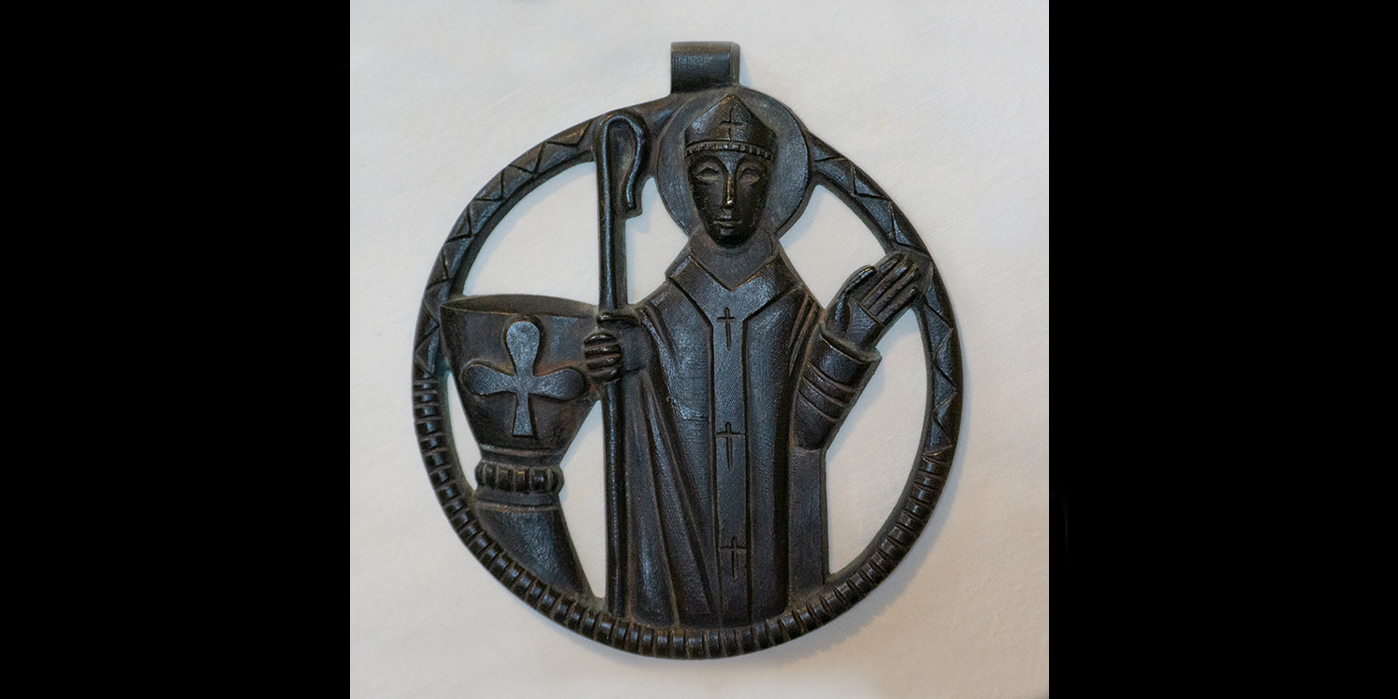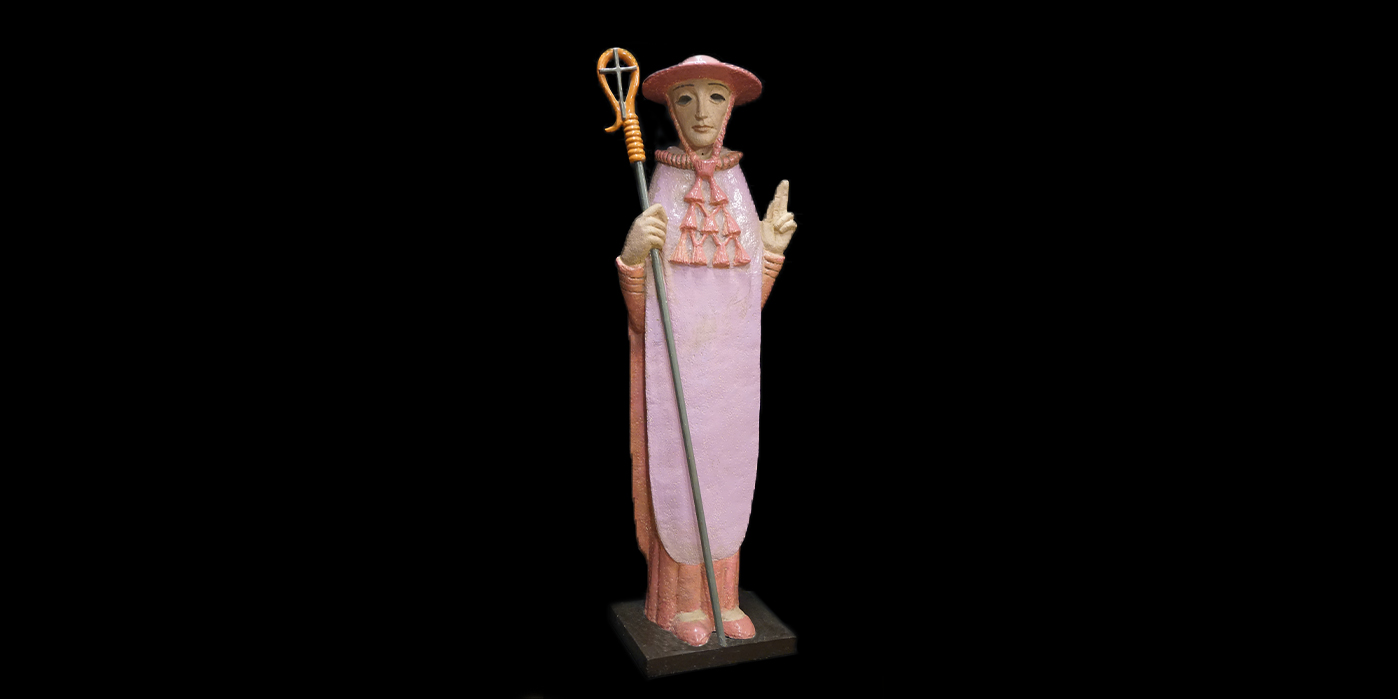Winter 2021 Virtual Exhibit: Through the eyes of Jean Lambert-Rucki
“There is a third movement, in which the perception and contemplation of beauty generates a sense of hope that can light up our world”
– Pope Francis (Threefold Impact of Art at Critical Time in History, 12/12/2020)
Jean Lambert-Rucki (1888–1967), a Polish avant-garde artist, sculptor, and graphic artist, was best known for his participation in the Cubist, Surrealist and Art Deco movements. Working in diverse styles and media, at times influenced by the tribal art of Africa, Lambert-Rucki became well known for his Cubist cityscapes and, later, his “modern” Christian art.
Born in 1888 in Kraków, Poland, Jean Lambert-Rucki was the youngest of a large family. A child prodigy, he earned a living by making portraits. He attended art school in his hometown and later went to the School of Fine Arts in Kraków. His youth was marked by the rich folklore of Central Europe. He made several trips to Russia, frequented Traveler communities, and learned Russian dances. His work throughout his career would remain deeply imbued with the product of these early experiences.
In 1911, enthused by an exhibition of works by Gauguin in Kraków, he decided to go to Paris. There he met friends of Polish origin and enrolled at the Académie Colarossi. After 1918, Cubism returned as a central focus for artists in Paris. In 1920 he married Monique Bickel (born 1892), herself a pupil of the sculptor Auguste Rodin. Their daughter, Mara Rucki, also an accomplished painter, was born April 7, 1920.
From 1925 to the end of his life, Lambert-Rucki exhibited his works, most of which were commissioned throughout Europe, Canada and the United States, many by churches undertaking large renovations after the Great War. In 1925 he collaborated on the International Exposition of Modern Industrial and Decorative Arts. This exhibition epitomized what came to be called Art Deco, a “modern” style characterized by streamlined geometric and symmetric compositions, and a sleek machine-age look.
From 1930 on, Lambert-Rucki also became one of the pioneers of Modern Catholic Art. In 1931, he became an active member of the Union des Artistes Modernes (UAM), where he exhibited alongside René Herbst, Charles-Edouard Jeanneret (Le Corbusier), Robert Mallet-Stevens, the architect Georges-Henri Pingusson, and Jean Fouquet in exhibits that emphasized design over decoration, exteriority over interiority, and a continued rejection of the romantic Christian art of the previous century. In 1967, at the age of 78-79, he died from a vascular disease. Throughout his life he remained solitary, fleeing the world with its demands and its vanities. [Wikipedia (Free Encyclopedia)]
If incorrect information is discovered, we welcome your input at info@mtangel.edu
The virtual exhibit was displayed through March 31, 2021.











